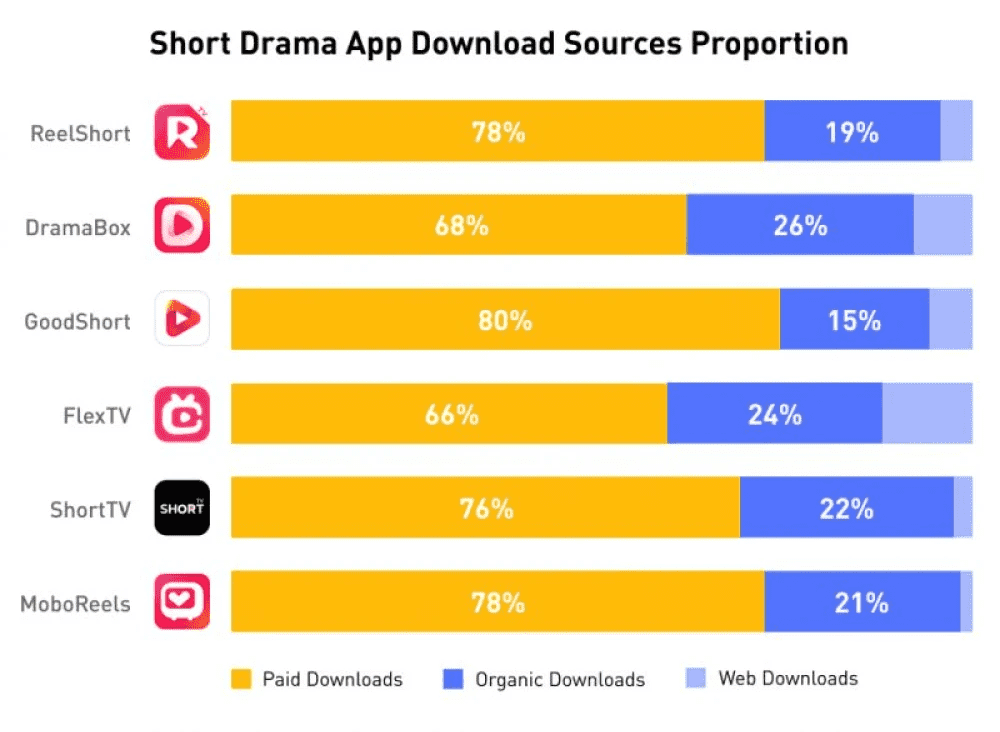Micro-Drama Genre Booms In Asia As Top Apps Surpass 150M Active Users

In a seismic shift for global entertainment, Asia’s micro-drama craze has exploded into a multibillion-dollar industry, with top apps like Dramabox, Reelshort, and Shortmax surpassing 150 million monthly active users (MAUs) in February 2025, according to a new report by Omdia. This niche genre—episodic content ranging from 60 to 90 seconds—is reshaping how stories are told and consumed across the continent, even as it spills into markets like the U.S., Brazil, and the Philippines.
The Micro-Drama Boom: Key Numbers

- Revenue Surge:
- Dramabox: App store revenue skyrocketed 2,550% year-over-year (from 8Min2023to217M in 2024).
- Shortmax: Grew 3,888% in revenue (from 36Mto214M).
- Reelshort: Generated $214M in 2024 alone.
- User Growth:
- The top five apps saw 5,848% MAU growth from late 2023 to late 2024.
- In China alone, 662 million users watched micro-dramas in 2024 (out of 1 billion short-video users).
- Global Reach:
- Platforms like Singapore’s Viddsee and South Korea’s Tving/Watcha are targeting Southeast Asia, India, and even the U.S., where audiences crave bite-sized, bingeable content.
com.storymatrix.dramaWhy Micro-Dramas Are Taking Over Asia

- Low Production Costs, High Speed:
- Episodes cost a fraction of traditional TV shows (some as low as $1,000 per minute) and can be filmed in days, not months.
- AI tools streamline scripting, filming, and editing, slashing costs further.
- Mobile-First Culture:
- Vertical video formats (optimized for smartphones) dominate, aligning with Asia’s smartphone penetration (e.g., 70.7% of South Korean video consumption shifted to short-form in 2024).
- Flexible Monetization:
- Ads, subscriptions, pay-per-episode, and in-app currencies dominate. For example:
- Users unlock episodes by watching ads or paying 0.20–1.50.
- Daily check-ins and social media engagement earn virtual coins.
- Ads, subscriptions, pay-per-episode, and in-app currencies dominate. For example:
- Cultural Relevance:
- Stories often tackle relatable themes like romance, workplace drama, or social issues, resonating with younger demographics.
- In China, micro-dramas are a gateway for indie creators to bypass traditional gatekeepers.
com.newleaf.app.android.victorRegulatory Challenges and Controversies

Asia’s micro-drama boom hasn’t been without hurdles:
- China’s Crackdown:
- Regulators ordered ByteDance-backed Hongguo to remove 130 micro-dramas in December 2024 for violating “public order and social morality.”
- Content now faces stricter censorship, particularly around LGBTQ+ themes or politically sensitive topics.
- Balancing Profit and Creativity:
- While AI boosts efficiency, critics warn it risks homogenizing storytelling.
The Future of Micro-Dramas

- Tech Partnerships:
- Telcos like Indonesia’s Telkomsel bundle micro-drama apps with data plans (e.g., “FlexTV”).
- Gaming giants like Krafton (creator of PUBG) invest in platforms like Vigloo to tap into niche audiences.
- Expansion Beyond Asia:
- U.S. platforms like YouTube Shorts and Instagram Reels are experimenting with micro-drama formats.
- Indian gaming firm Nazara Technologies invested $250,000 in ReelSaga Innovations to tap into regional storytelling.
- Hybrid Models:
- Major studios (e.g., Tencent Video) blend micro-dramas with traditional content, offering “bingeable” narratives alongside feature-length films.
live.shorttv.appsConclusion: A Global Shift in Storytelling
Asia’s micro-drama revolution isn’t just a fleeting trend—it’s a blueprint for the future of entertainment. With razor-sharp focus on mobile audiences, low-cost production, and AI-driven scalability, these bite-sized stories are challenging Hollywood’s dominance and redefining how we consume media. As regulators grapple with content moderation, creators continue pushing boundaries, proving that even the shortest narratives can have massive global appeal.
Data Source: Omdia Report (2025), Sensor Tower, CNNIC




